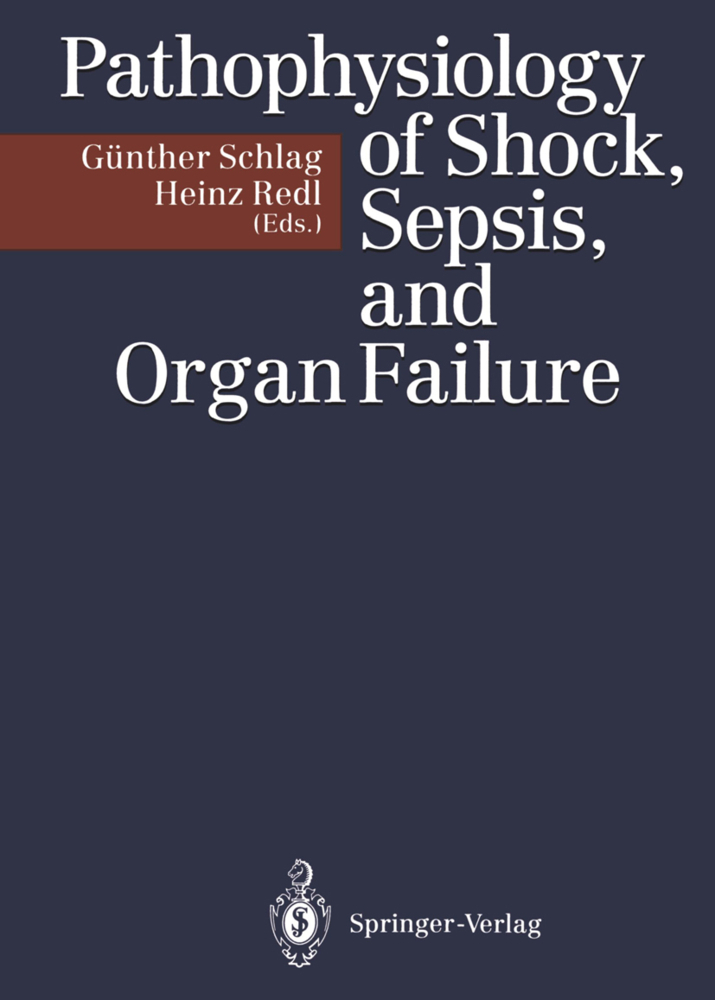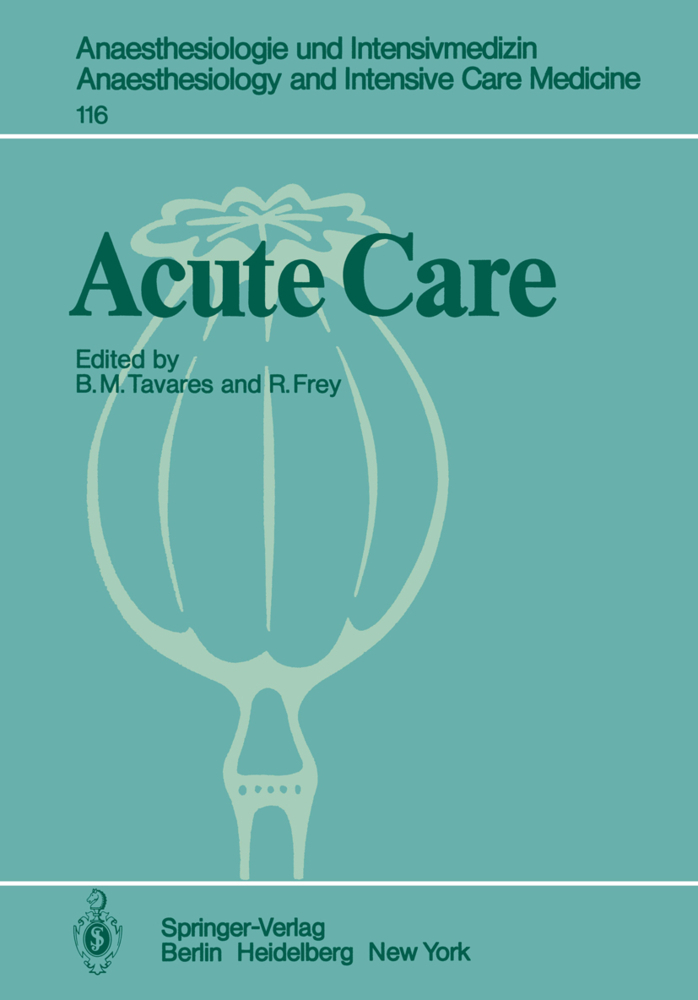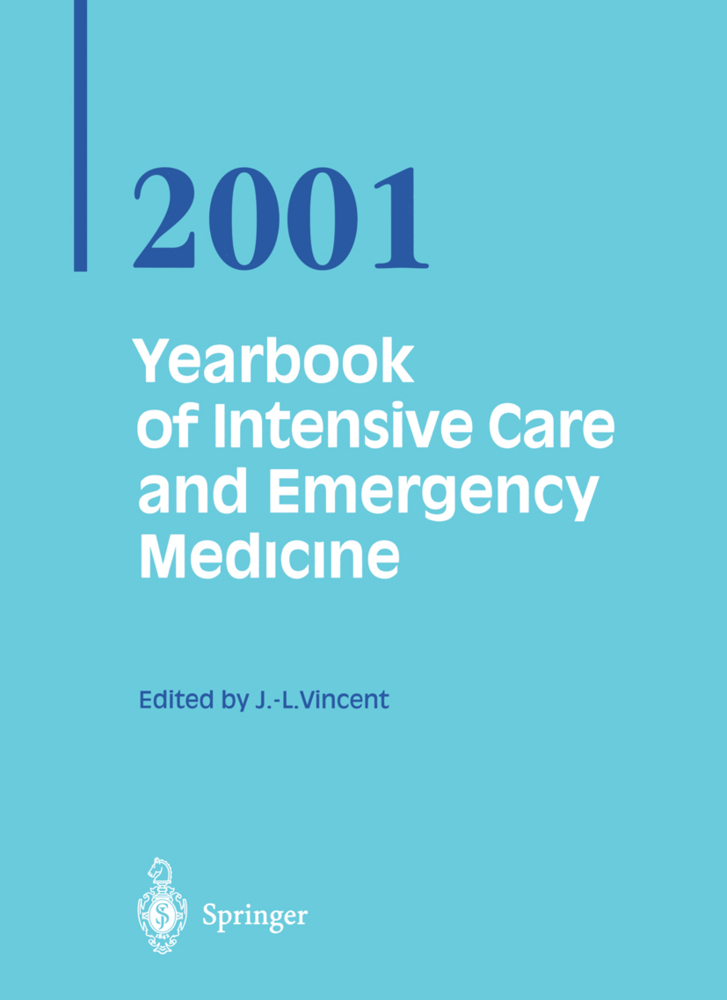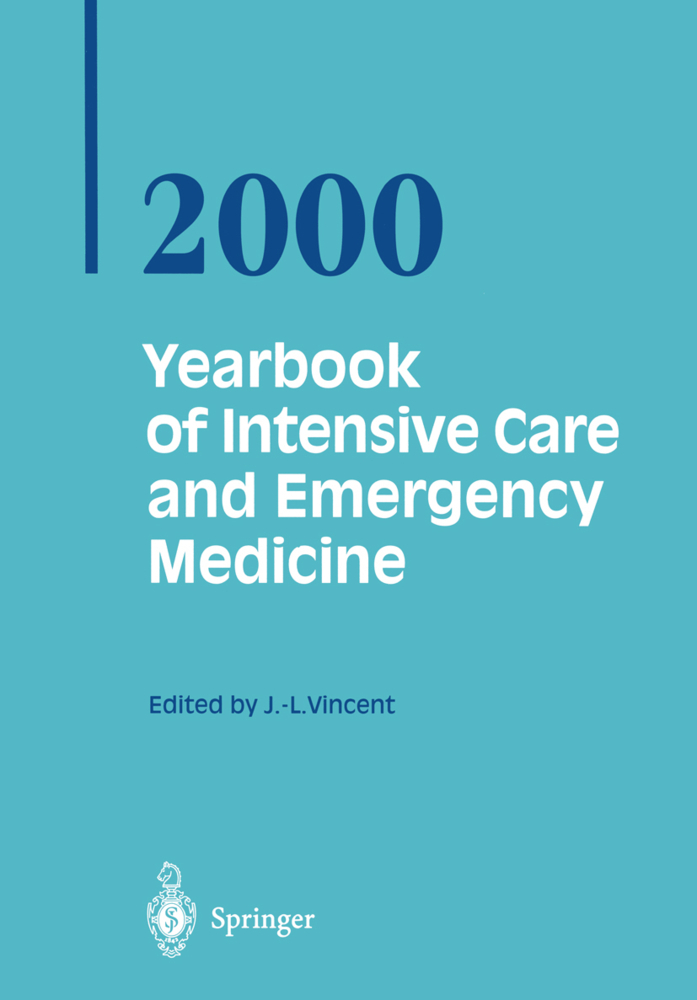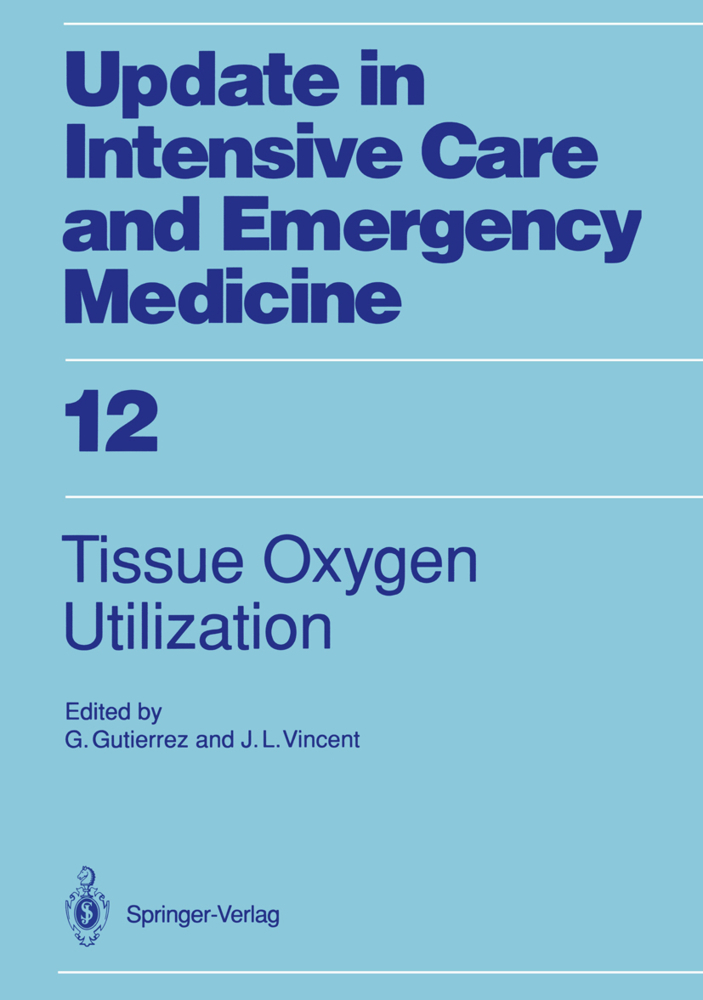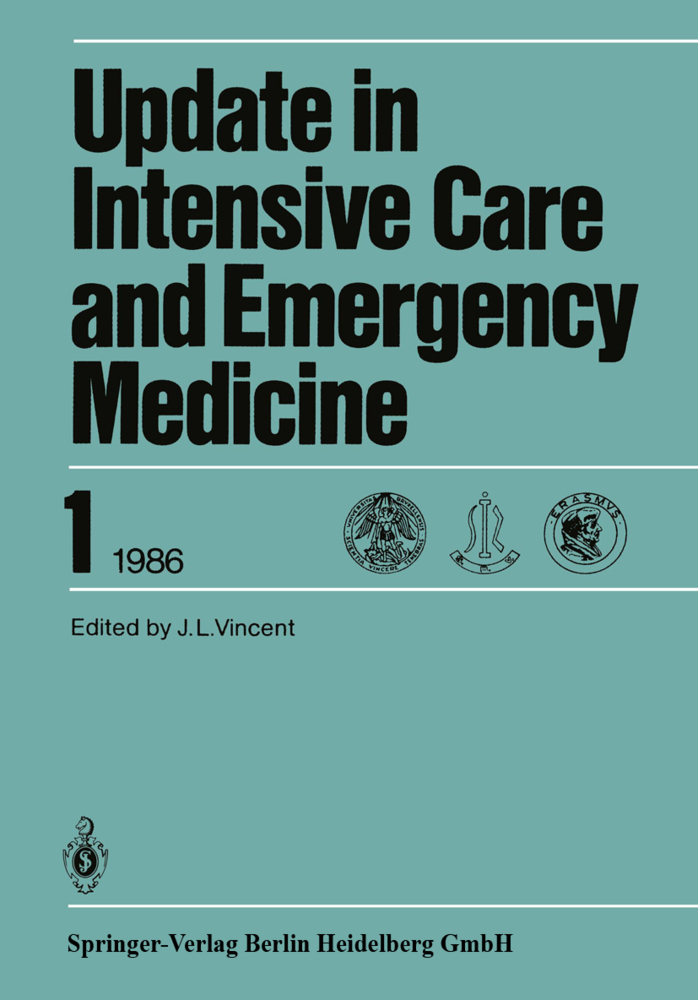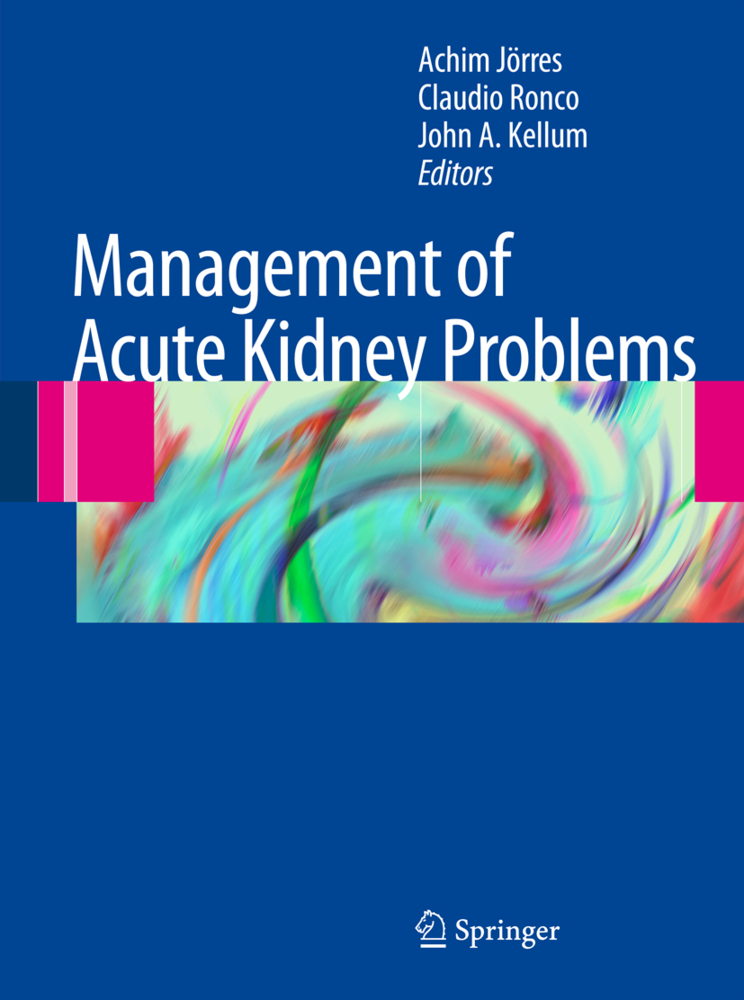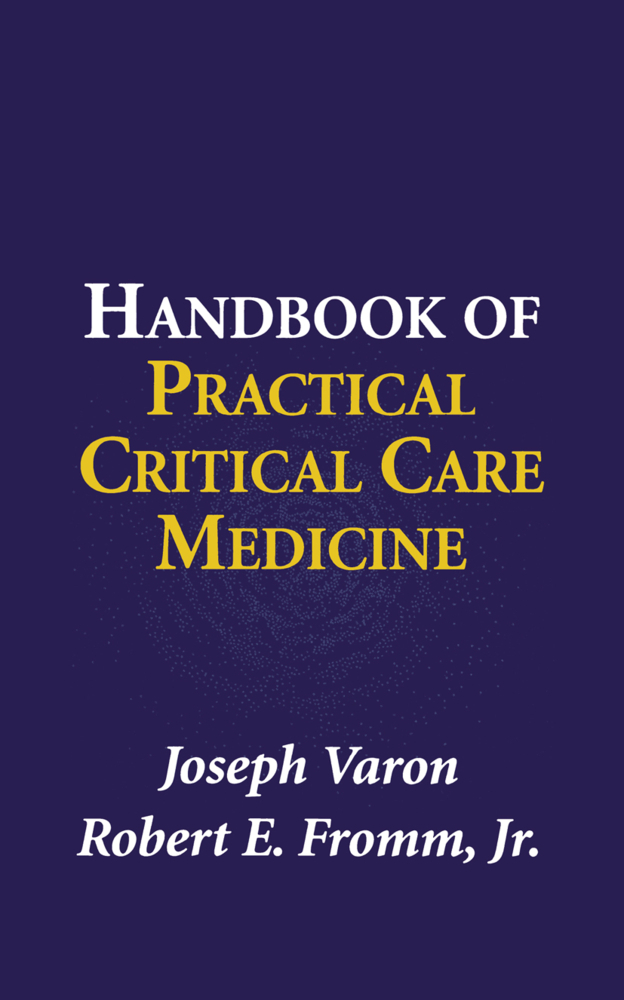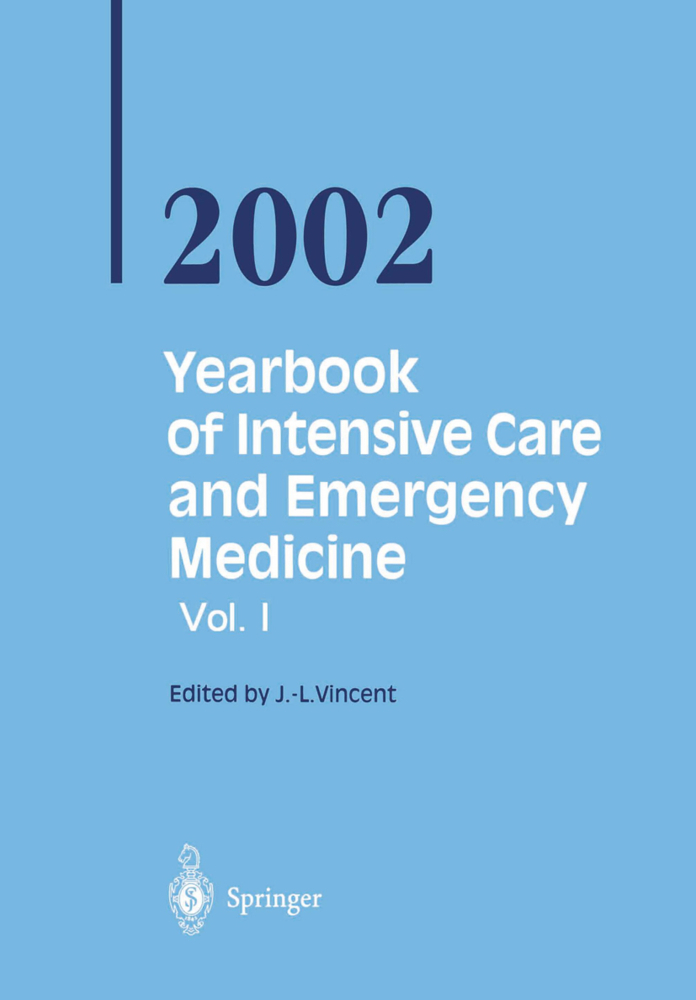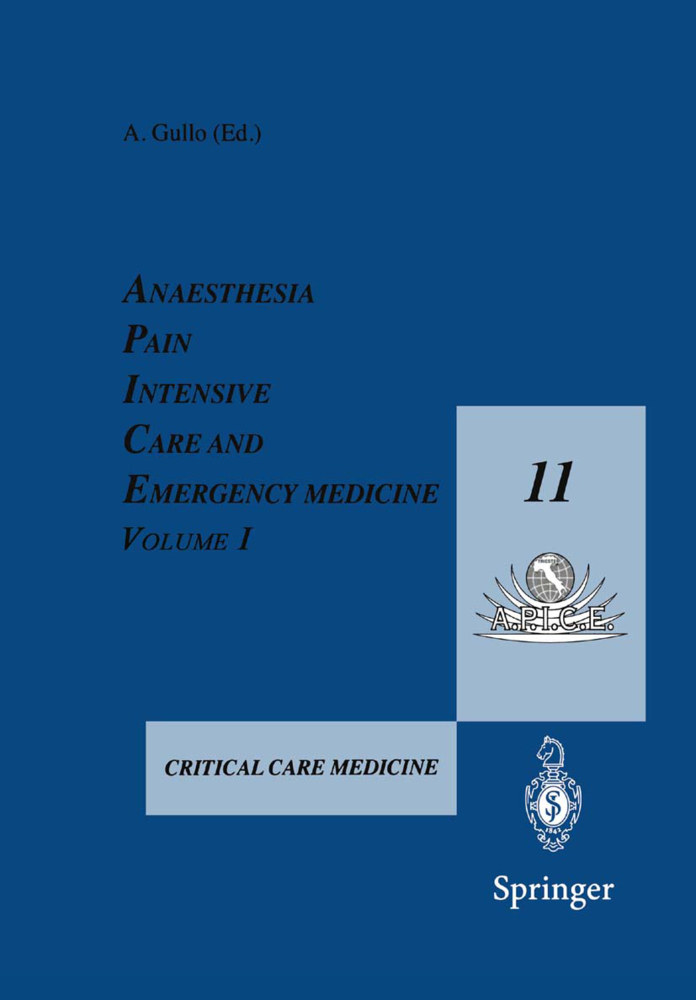Pathophysiology of Shock, Sepsis, and Organ Failure
Pathophysiology of Shock, Sepsis, and Organ Failure
In this book current knowledge of the pathophysiology of shock, sepsis and multi organ failure is presented. The rapid progress which has been made and the results achieved in intensive care medicine are based on sound basic research, which is duly reflected in these chapters. Multiorgan failure is the foremost cause of postoperative and posttraumatic death and many complex mechanisms are involved. Only with a good foundation of basic research can abnormalities in the physiological, biochemical, and morphological course of shock be recognized and the necessary conclusions for treatment drawn. Therapy must proceed from profound knowledge of the multi variant physiological events in order to influence shock, sepsis and organ failure. Although numerous possibilities for therapy have arisen from pharmaceutical research in recent years, they are beyond the scope of this book and are not discussed here. To gain a better understanding of the pathophysiological events it was necessary to examine and to describe different models that simulate and reproduce these events. Here we describe the causative agents (shock) and the consequences (sepsis, organ failure) in two main sections, divided on the basis of their pathophysiology.
Shock, Sepsis, and Multiple Organ Failure: The Result of Whole-Body Inflammation
The Role of Complement
Activation of Humoral Systems. The Role of Coagulation, Fibrinolysis, and the Plasma Kallikrein-Kinin System
Proteinases
Cellular Mechanisms of Leukocyte Adhesion
Eicosanoids in Trauma and Traumatic Shock
Radical Related Cell Injury
Humoral Mechanisms
Monocyte and Lymphocyte Responses Following Trauma
Metabolic Response to Trauma
Morphology of the Lung as a Consequence of Direct and Indirect Trauma
Permeability Changes
Cardiac Function During Hypovolemia
Cardiodepressant Factors
Response of the Macrocirculation
Response of the Microcirculation: Tissue Oxygenation
Cardiovascular Function in Acute Burns
Morphology of the Liver in Shock
Bacterial Translocation
Bacterial Translocation During Traumatic Shock in Baboons
Bacterial Translocation in Polytrauma Patients
Bacterial Translocation in Burns
Hypoxic Damage
Reperfusion Injury in the Small Intestine
Kidney Blood Flow Changes in Shock
Central Nervous System Response to Trauma
Rat and Mouse Models of Hypovolemic-Traumatic Shock
Hypovolemic-Traumatic Shock Models in Baboons
The Development of the Sepsis and Multi-Organ-Dysfunction-Syndrome (MODS)
The Active Principle of Bacterial Lipopolysaccharides (Endotoxins) for Cytokine Induction
LPS Plasma Levels in Patients
Bacterial Exotoxins and Vascular Injury
Complement in Sepsis
Activation of Humoral Systems: Coagulation, Fibrinolysis, and Plasma Kallikrein-Kinin Systems
The Cytokine Network in Trauma and Sepsis I: TNF and IL-8
TheCytokine Network in Sepsis II: IL-1 and IL-6
Platelet-Activating Factor in Shock, Sepsis, and Organ Failure
Endotoxin Activation of Eicosanoid Production by Macrophages
Proteolytic Enzyme Systems
Activation/Adherence Phenomena of Leukocytes and Endothelial Cells in Trauma and Sepsis
Procoagulant Response of the Endothelium and Monocytes
The Role of the L-Arginine Nitric Oxide Pathway in Sepsis and Endotoxaemia with Special Reference to Vascular Impairment
Cytokine Modulation of Glucose Metabolism
Mechanism of Insulin Resistance in Infection
The Host Defense to Trauma and Sepsis: Multiple Organ Failure as a Manifestation of Host Defense Failure Disease
Experimentally Induced DIC - DIC as a Cause of MOF
Three Clinical Presentations of E. coli Sepsis as Studied in the Baboon Model
Morphology of the Lung in Late Septic Shock
Morphological Changes in Adult Respiratory Distress Syndrome: Experimental and Clinical Data
The Role of Respiratory Failure in Multiorgan Failure
Fibronectin and the Reticuloendothelial System: Relationship to Lung Vascular Failure During Septic Shock
Abnormalities of the Lung Surfactant System in Acute Lung Injury
Experimental Models in Surfactant Research
Myocardial Dysfunction in Experimental Shock
"Negative Inotropic Cascades" in Cardiomyocytes Triggered by Substances Relevant to Sepsis
Myocardial Dysfunction in Experimental Septic Shock
Pathomorphological Aspects of the Heart in Septic Patients
Clinical Manifestations of Cardiovascular Dysfunction in Sepsis
Coronary Hemodynamics and Myocardial Metabolism in Sepsis and Septic Shock
Peripheral Macro- and Microcirculation
Relationship Between Oxygen Demand and Oxygen Supply in Severe Sepsis
Hepatic Responses to Bacterial Endotoxin (LPS).-Experimental Liver Failure
Hepatic Dysfunction in Shock and Organ Failure
Sepsis Related Renal Morphological Alterations and the Functional Correlates
The Kidney in Sepsis
Neurologic Abnormalities in Sepsis
The Multiple Organ or System Failure Syndrome
Models of Endotoxemia in Rodents
Models of Endotoxemia in Sheep
Rodent Models of Endotoxemia and Sepsis
Sheep and Pigs as Animal Models of Bacteremia
Live Escherichia coli Sepsis Models in Baboons
Animal Models of Endotoxemia and Sepsis
Models of Sepsis: Subacute Peritonitis in Sheep and Rats
Chronic Models of Endotoxemia and Sepsis: Lessons from Both a Canine Peritonitis and a Human Endotoxemia Model.
Introduction: "Organ in Shock", "Early Organ Failure", "Late Organ Failure"
Trauma, Shock and Development of the Organ in Shock and Early Organ Failure (SIRS)Shock, Sepsis, and Multiple Organ Failure: The Result of Whole-Body Inflammation
The Role of Complement
Activation of Humoral Systems. The Role of Coagulation, Fibrinolysis, and the Plasma Kallikrein-Kinin System
Proteinases
Cellular Mechanisms of Leukocyte Adhesion
Eicosanoids in Trauma and Traumatic Shock
Radical Related Cell Injury
Humoral Mechanisms
Monocyte and Lymphocyte Responses Following Trauma
Metabolic Response to Trauma
Morphology of the Lung as a Consequence of Direct and Indirect Trauma
Permeability Changes
Cardiac Function During Hypovolemia
Cardiodepressant Factors
Response of the Macrocirculation
Response of the Microcirculation: Tissue Oxygenation
Cardiovascular Function in Acute Burns
Morphology of the Liver in Shock
Bacterial Translocation
Bacterial Translocation During Traumatic Shock in Baboons
Bacterial Translocation in Polytrauma Patients
Bacterial Translocation in Burns
Hypoxic Damage
Reperfusion Injury in the Small Intestine
Kidney Blood Flow Changes in Shock
Central Nervous System Response to Trauma
Rat and Mouse Models of Hypovolemic-Traumatic Shock
Hypovolemic-Traumatic Shock Models in Baboons
The Development of the Sepsis and Multi-Organ-Dysfunction-Syndrome (MODS)
The Active Principle of Bacterial Lipopolysaccharides (Endotoxins) for Cytokine Induction
LPS Plasma Levels in Patients
Bacterial Exotoxins and Vascular Injury
Complement in Sepsis
Activation of Humoral Systems: Coagulation, Fibrinolysis, and Plasma Kallikrein-Kinin Systems
The Cytokine Network in Trauma and Sepsis I: TNF and IL-8
TheCytokine Network in Sepsis II: IL-1 and IL-6
Platelet-Activating Factor in Shock, Sepsis, and Organ Failure
Endotoxin Activation of Eicosanoid Production by Macrophages
Proteolytic Enzyme Systems
Activation/Adherence Phenomena of Leukocytes and Endothelial Cells in Trauma and Sepsis
Procoagulant Response of the Endothelium and Monocytes
The Role of the L-Arginine Nitric Oxide Pathway in Sepsis and Endotoxaemia with Special Reference to Vascular Impairment
Cytokine Modulation of Glucose Metabolism
Mechanism of Insulin Resistance in Infection
The Host Defense to Trauma and Sepsis: Multiple Organ Failure as a Manifestation of Host Defense Failure Disease
Experimentally Induced DIC - DIC as a Cause of MOF
Three Clinical Presentations of E. coli Sepsis as Studied in the Baboon Model
Morphology of the Lung in Late Septic Shock
Morphological Changes in Adult Respiratory Distress Syndrome: Experimental and Clinical Data
The Role of Respiratory Failure in Multiorgan Failure
Fibronectin and the Reticuloendothelial System: Relationship to Lung Vascular Failure During Septic Shock
Abnormalities of the Lung Surfactant System in Acute Lung Injury
Experimental Models in Surfactant Research
Myocardial Dysfunction in Experimental Shock
"Negative Inotropic Cascades" in Cardiomyocytes Triggered by Substances Relevant to Sepsis
Myocardial Dysfunction in Experimental Septic Shock
Pathomorphological Aspects of the Heart in Septic Patients
Clinical Manifestations of Cardiovascular Dysfunction in Sepsis
Coronary Hemodynamics and Myocardial Metabolism in Sepsis and Septic Shock
Peripheral Macro- and Microcirculation
Relationship Between Oxygen Demand and Oxygen Supply in Severe Sepsis
Hepatic Responses to Bacterial Endotoxin (LPS).-Experimental Liver Failure
Hepatic Dysfunction in Shock and Organ Failure
Sepsis Related Renal Morphological Alterations and the Functional Correlates
The Kidney in Sepsis
Neurologic Abnormalities in Sepsis
The Multiple Organ or System Failure Syndrome
Models of Endotoxemia in Rodents
Models of Endotoxemia in Sheep
Rodent Models of Endotoxemia and Sepsis
Sheep and Pigs as Animal Models of Bacteremia
Live Escherichia coli Sepsis Models in Baboons
Animal Models of Endotoxemia and Sepsis
Models of Sepsis: Subacute Peritonitis in Sheep and Rats
Chronic Models of Endotoxemia and Sepsis: Lessons from Both a Canine Peritonitis and a Human Endotoxemia Model.
| ISBN | 978-3-642-76738-8 |
|---|---|
| Artikelnummer | 9783642767388 |
| Medientyp | Buch |
| Copyrightjahr | 2011 |
| Verlag | Springer, Berlin |
| Umfang | XIX, 1165 Seiten |
| Abbildungen | XIX, 1165 p. |
| Sprache | Englisch |

